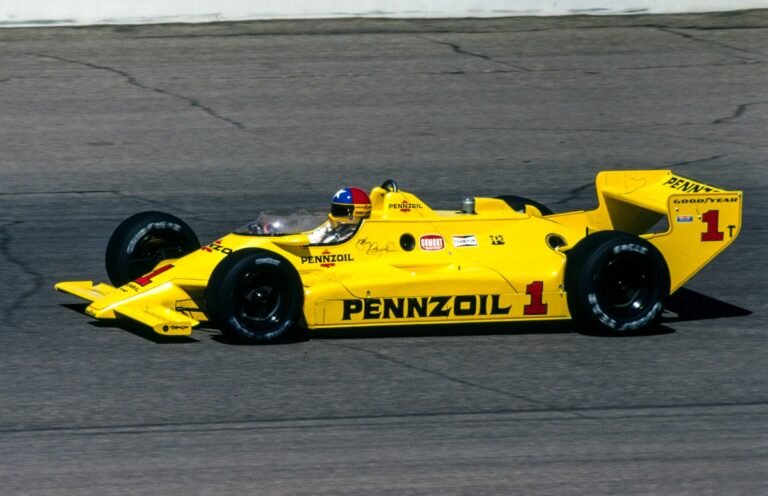Chaparral 2K: A Revolutionary Force in IndyCar History
On May 25, 1980, the Chaparral 2K, engineered by Jim Hall and unveiled in a striking Pennzoil livery, made its mark at the Indianapolis 500, a triumph that remains a significant milestone in motorsports innovation. The car’s design, notable for its extensive use of ground effects, allowed driver Johnny Rutherford to experience unprecedented performance, pushing the boundaries of speed and grip.
Rutherford reflected on driving the 2K during its initial testing: “The only time I had to lift the throttle at Phoenix was just to transfer weight to the front for Turns 1 and 2. The rest was flat all the way, and at the time, that was unheard of.” This was indicative of a vehicle redefining the limits not only for its driver but for the entire series.
A History of Innovation
Chaparral entered the IndyCar arena in 1978 with the Lola T500, but it did not yield favorable results. Legendary driver Al Unser expressed frustration with the car’s performance: “Any track we went, how the car was when we rolled it out was how it was going to stay.” This prompted Hall to seek enhancements leading to the creation of the 2K.
Designer John Barnard was pivotal in this endeavor, citing inspiration from ground effect designs and innovations from other teams. Barnard noted, “On the VPJ6, I’d been playing around with plastic skirts underneath the car. It got us all thinking.” Despite limited design time, the 2K emerged as a competitor, significantly outperforming its predecessor.
Dominating Performance
The Chaparral 2K debuted successfully in 1979, consistently securing top-three qualifications and showcasing exceptional speed. Hall recalled, “We were amazed how good it was…it was a tremendous change from the car we’d been running the year before.” However, mechanical issues plagued the debut season, exemplified by Unser’s retirement at the Indianapolis 500 due to a transmission failure.
By the 1980 season, the car had matured into a nearly flawless competitor. Rutherford, now behind the wheel, quickly adapted, stating, “The Chaparral let you go so much further, it really put you in a nervous situation.” His mastery culminated in winning the Indy 500, marking his third victory at the Brickyard.
Legacy of the Chaparral 2K
Rutherford claimed the 1980 IndyCar championship, supported by additional wins throughout the season. However, the car’s initial dominance soon diminished as competitors, notably Team Penske, leveraged the 2K’s aerodynamic innovations, leading to a decline in its winning streak.
Barnard commented on the potential for further advancements, lamenting what might have been with continued development. “If I’d stayed at Chaparral, the minimum I’d have done would have been designing proper carbon underfloors…that would have improved the car immensely,” he stated.
Chaparral continued to run the 2K until 1982, but the magic faded along with its competitive edge as ground effects regulations shifted, leading to the team’s eventual retreat from the series. The Chaparral 2K remains a symbol of innovation, its influence echoing through the history of IndyCar racing.



